A few days ago when I went to a holiday family gathering, a relative’s friend and I had a bit of a discussion regarding firearms. We talked about handgun calibers and some of the newest guns that will be released this year, but what we discussed about at length was his carry piece, a Beretta M92FS.
I personally haven’t owned or shot a Beretta 92FS, because I owned a Daewoo DP51.
It’s a Korean-made handgun that looks similar, is chambered for the same cartridge (9mm), and also uses a double stack magazine — and I remember being told by a gun dealer at one point that my Daewoo handled kind of the same as the Beretta as well.
I’ve never really been a fan of the 9mm as a handgun caliber, so I’ve never felt the need to get any other handgun chambered for that round (it was also the reason why I ended up selling the Daewoo — I love my 1911 and can’t care less about any semi-auto handguns in 9mm).
I’ve heard that these Beretta handguns replaced the time-proven 1911 as the US military’s standard issue firearm in the 80’s, but I’ve also heard rumors that this handgun is hated by a lot of people for some reason. That’s about everything I know about it.
Unpack This Article's Arsenal
Get Great Guns And Ammo Deals!
SAFEST NEWSLETTER - WE WILL NEVER SELL YOUR EMAIL
No Spam - No Selling Your Email
Beretta Negatives
During our discussion some of my negative biases about these handguns were addressed.
I never would have thought he could get me interested in it. But I was still left with many unanswered questions so I decided to do a research.
Beretta M92FS History
To get a complete picture of how the M92FS came to be, I dug up info about the manufacturer.
Founded in 1526 by Bartolomeo Beretta, Fabbrica d’Armi Pietro Beretta from Italy is the oldest known firearms manufacturer in the world that’s still active today. The founder made a name for himself by manufacturing arquebus barrels for the Arsenal of Venice. The company still exists today.
The Italian army commissioned Beretta to supply their troops with firearms during both World War I and World War II, some of the more common designs being the M1918 and M1938, but it wasn’t until 1975 when they hit it big time with their M92.
As was mentioned in this article, in the aftermath of World War II, most American police, law enforcement and civilian handgun markets only had either the 1911 in .45 ACP or classic revolvers chambered in .38 Special or .357 Magnum available. While both platforms are time-proven, reliable and effective, both suffer from having the same exact limiting factor: low ammo capacity.
The typical 1911’s box magazine could only hold seven or eight rounds, while typical revolvers could only be loaded with six rounds in its cylinder (seven and eight round cylinder designs only came out fairly recently), not to mention the latter can be significantly slower to reload (and speed loaders can be difficult to use during stressful situations).
9MM World War II
It was in World War II when double-stack 9mm handguns, the earliest of which being handguns used during World War II, e.g. Browning Hi-Power and Walther P38, were first used in military combat.
Fast forward to a few decades later, modern double-stack 9mm semi-autos slowly crept their way into the police, military, armed forces and civilian firearms market.
It was around the early 1970’s when pistols collectively referred to (loosely and sometimes even sarcastically) as the “Wonder Nines” would start becoming available in the civilian market: MAB PA-15, Heckler & Koch VP70, Smith & Wesson Model 59, Beretta M92 and CZ-75, Steyr GB, Glock 17 and SIG Sauer P226.
But because the 9mm cartridge has relatively weaker ballistics performance compared to either the .45 ACP or the .357 Magnum, the Wonder Nines were still met with skepticism by the police and civilians.

Several tests were conducted in the following years and competition was stiff among the contenders.
The M92F (an early M92FS variant) came out on top, surviving torture tests such as exposure to temperatures ranging from 20 °C to 60 °C, being dropped in concrete, being soaked in salt water and being buried in snow, mud and sand.
In addition, the M92F was proven to have a mean round before failure (MRBF) rating of 35,000 rounds, confirming its durability. It would also reliably fire up to 17,500 rounds continuously without stoppage.
Beretta 9mm Variants
The original variant released by Beretta in Italy in 1976, the M92, was designed by Carlo Beretta, Giuseppe Mazzetti, and Vittorio Valle.
The result of many decades of pistol manufacturing perfection, it had many of the characteristics of its earlier brethren, the M1922, M1934 and M1951, the latest contributing to its aesthetics more so than the previous two.
Intended for use by the Italian military forces, the M92 uses a high-capacity magazine that can fit 15 rounds of 9x19mm Parabellum.
Made of aluminum alloy, its slide has a long cutout which gives the handgun (and all other later revisions) its signature appearance and also acts as an oversized ejection port, exposing the barrel.
This exposed-barrel design allows the gun to shoot smoothly and reliably, effectively eliminating any possibilities of an FTE (failure to eject). In addition, it uses a fixed barrel design which reduces FTFs (failure to feed) and contributes greatly to accuracy.
But despite all its positives, the M92 saw very limited production in its native country.
3 Notable Things about the M92
There were three notable things about this model that would later have to be changed: it had its magazine release located on the bottom of the grip, it has a “step slide” (i.e. on the middle of the slide is a “step” that segments it, which can be used to rack it), and the thumb safety was mounted on the frame — it functioned like a typical 1911’s thumb safety and wouldn’t decock the hammer.
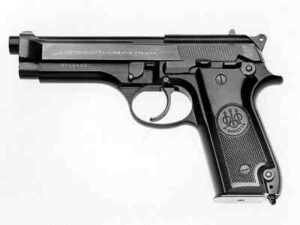
The slide on this variant would become straight and smooth, it wouldn’t have that “step”/segment on the middle. But it worked the same as the first model, with the magazine release still on the grip and the thumb safety still on the frame.
Another year later (1978), the third variant, the M92S, was released for adoption by several Italian military and law enforcement agencies.
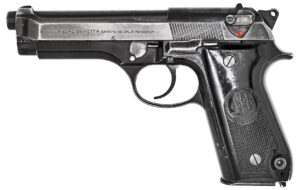
This feature made the Beretta 9MM handgun a more advanced piece of hardware compared to the 1911 it would later supersede.
There are a few ways the 1911 can be carried.
These are called “Readiness Conditions”:
- Condition 0: Full magazine in, chamber loaded, hammer cocked and thumb safety off — the gun is unsafe when carried this way as it can potentially lead to an accidental discharge while drawing the the 1911 from a holster. But carrying the 1911 this way, the shooter can just aim and pull the trigger without having to worry about racking the slide;
- Condition 1, a.k.a. “Cocked and Locked”: Full magazine in, chamber loaded, hammer cocked and thumb safety engaged — the handgun is safe when carried this way and disengaging the safety is faster than racking the slide. This has become the most popular way of carrying the 1911, even I carry my EDC piece this way, the only drawback is it looks scary to people who don’t understand how the 1911’s safety features (i.e. thumb and grip safety) work.
- Condition 2: Full magazine in, chamber loaded, hammer down, thumb safety off — to fire the 1911, the shooter has to cock the hammer first. This might sound similar to the cocked and locked condition but the problem lies in “decocking” the hammer after the slide is racked because the 1911 has no decocker. Decocking the hammer might result in an accidental discharge because to do it, the trigger has to be pulled.
- Condition 3, a.k.a. “The Israeli draw”: Full magazine in, chamber empty, hammer down — after drawing the gun its slide has to be racked before it can be fired. In some stressful combat situations this can be impractical because it’ll take time to work the slide, but this is the safest method of carrying, and with enough time and practice this draw method can be mastered. But therein lies the biggest drawback: it requires time, a resource not everyone has.
Slide Mounted Decocker
The slide-mounted decocker on the M92S (and all subsequent variants of this model) rotates the firing pin plunger out of the firing pin’s way so the hammer can be lowered safely without discharging the firearm.
It also acts like the 1911’s thumb safety: the trigger won’t cock and release the hammer (i.e. handgun won’t fire in double action mode) unless it is deactivated. This safety/decocker makes it mechanically superior to the 1911 in terms of safety.

All M92Fs and M9s had parts that were 100% interchangeable to make maintenance and repairs easier and simpler.
The front of the trigger guard was modified so that the shooter could use their left index finger for support when aiming and shooting. The barrel was hard-chromed for better corrosion resistance and wear reduction. White post-and-dot sights were installed.
The previous blued finish was also done away with, as the newer M92F got a new coating called “Bruniton” which was supposed to be a more durable and corrosion-resistant type of finish.
The Beretta M92FS
Beretta 92FS Sight System
Finally, we come to the fifth variant which is also the topic of this article, the M92FS. Released in 1989, it has all the great features of the previous M92F but has additional improvements, the most obvious being the white three-dot sight system.
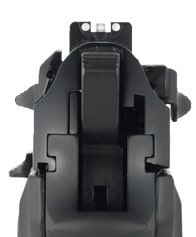
This enables the shooter line up the rear and front sights faster, which results in quick target acquisition.
Engaging multiple targets consecutively becomes easier as well because the front sight is thinner. It does not obstruct the shooter’s field of view.
Its dust cover now tapers towards the front end, giving it a “slanted” profile which makes it easier to insert in or draw from a holster.
It now has a “radiused” backstrap, designed in such a way that the shooter can grip the gun higher so that the bore axis is lower, minimizing muzzle flip. This new grip design allows for fast and accurate single-action follow-up shots after the first heavy double-action shot.
As some of the previous M92F models were discovered to have a relatively weak slide prone to breakage, its locking block design had to be changed to increase the service life of the handgun.
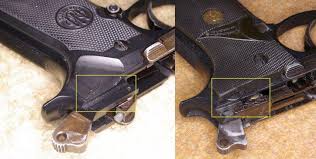
But the redesign would take a while, so the updated M92FS had to be given a safety measure to reduce the risk of the shooter being struck by the slide’s back half if or when it breaks. It came in the form of an enlarged hammer axis pin which would act as a slide retention device.
Beretta 92FS Pros and Cons
No firearm is perfect, each has its inherent strong and weak points depending on its design, the material it uses, etc. The Beretta M92FS is no exception. Here’s a list of some of its most common pros and cons:
Pros:
- All M92FS pistols have an ambidextrous safety which doubles as a decocker. This makes the pistols safer to use compared to single-action hammer-fired semi-autos.
- The exposed barrel design leads to the handgun’s legendary reliability.
- The magazine release is reversible.
- Beretta claims that all modern M92FS handguns are rated for +P loads.
- All M92FS handguns are fairly large and soak up recoil nicely.
- The wide grip frame provides room for high-capacity magazines.
- Because of its popularity, there are a myriad of aftermarket accessories available for it, and there are many gunsmiths who can customize it to anyone’s liking.
M92FS Accuracy
- Beretta touts the M92FS to bevery accurate, consistently meeting and even exceeding the US military’s accuracy requirement of 10-shot 3-inch groups or less at distances of up to 50 meters. This is because it has a 4.9-inch barrel that uses the same fixed barrel design implemented in all M92 variants.
- The M92FS doesn’t require any tools to disassemble. Field stripping the handgun for cleaning and maintenance is simple and easy, there is a frame-mounted latch on the handgun that frees out the take-down bar on the frame. It only has to be pushed with a finger. Afterward the take-down bar can be pulled, and the slide comes right off.
- The Beretta M92FS is a proven design, superseding the 1911 as the US military’s standard issue sidearm. All firearms adopted by the military become popular. Because of this popularity, there’s demand for these guns, ergo they are always going to be priced just right.
Beretta 92FS Cons:
- The consensus among handgun enthusiasts on the M92FS’ first shot in double action and all subsequent shots in single action is, they’d much prefer all shots are fired in either double action only. Or single action only. Reason being it can be hard to get accustomed to pulling the stiffer trigger in double action mode then pulling the lighter trigger in single action mode. Many people complain that the change in trigger weight affects shot accuracy.
- Anytime the shooter racks the slide and the safety/decocker comes down, it becomes a problem because if they don’t remember to flip it up, the handgun won’t fire. This can be troublesome in self defense scenarios.
- A lot of people complain that the safety/decocker is in an awkward place. It’s just too high up on the slide. A shooter has to have a pretty long thumb to actuate it comfortably. I personally think the original thumb safety on the first M92 should have stayed on the frame on later models. Then again maybe I’m just biased toward my 1911.
- The exposed barrel design may result to the shooter losing a portion of their skin (or gloves) when trying to rack the slide. This has been a notoriously common issue, so much so that there’s an entry for it in UrbanDictionary.com: the Beretta bite.
Beretta 92FS Safety Cons
- Again because of the thumb safety/decocker’s location, when racking the slide, it sometimes gets inadvertently engaged. Beretta users who try to dodge the safety/decocker would have to rack the slide a little forward. Getting their skin caught between the barrel’s rear and the slide.
- The reversible magazine release can be difficult to reverse. If you’re a left-hand shooter and you’ve never messed around with guns before, it might be a pain in the butt to transfer the magazine release to the left side of the handgun. We recommend that you request your gun dealer or someone who has experience with any Beretta M92 handgun variant to do it for you.
- Mil-spec Beretta M9s (at least those from the mid to late 80’s) had a reputation of having weak slides prone to breaks and cracks. The fact that the modern M92FS pistol still has an aluminum-alloy slide. Couple with that large cutout/exposed barrel design gives little assurance. I’m not sure how it would hold up if it’s fed a steady diet of 9mm +P ammo.
Size and Weight of the 92FS
- Because of the handguns’ size and weight, they can be challenging, if not difficult, to carry concealed, especially when considering lightweight sub-compact polymer handguns on the market that can fit the same number of rounds in the mag.
- On the wide frame bit, people with smaller hands can often be heard complaining about how the grips are too big for a gun that shoots a small 9mm cartridge.
- On the subject of military adoption and the popularity that comes with it, just last year the M92FS was also superseded by the SIG Sauer P320, officially designated by the US military as the full-sized M17 and compact M18.
- Because of its proven design, other firearms manufacturers have been cloning the M92FS for a while now (e.g. the Brazilian company Taurus has a PT92 and the Turkish company Girsan has a Yavuz 16, a.k.a. ATI92 distributed by American Tactical Imports) — these clones cost significantly less.
Beretta 92FS – Pricing
As of this article’s writing, brand-new Beretta M92FS pistols can cost anywhere from $500 to $650 per piece, while used pistols are selling for as low as $350.
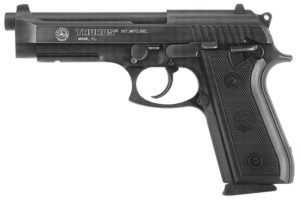
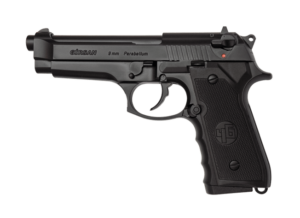
(Note: These Girsan Yavuz 16 pistols are exact copies of the Beretta M92FS, which means it will have all the issues associated with the original Italian pistol — the only difference is it has finger grooves milled into the grip frame).
Beretta M92FS Recommendations
After all the research I did and after carefully weighing the pros against the cons, I can confidently say that I’d love to have a Beretta M92FS as a home defense or a night stand handgun.
I’d rather not carry it concealed because as a CCW, it’s a little too large for my medium-size hands. If pushed to carry a full-size semi-auto, I would prefer carrying a gunsmith-tuned double-stack 1911 (a.k.a. 2011) in .45 ACP simply because I’m accustomed to 1911s more than any other semi automatic handgun platform.
That said I wouldn’t hesitate to carry a Beretta M92FS if it’s all I have. It’s rugged, reliable and deadly accurate. The only issue I really have with it is its size.
If you happen to already own one and you’re looking to carry it concealed, we’ve come up with a list of some of the best holsters for the M9 which will fit the M92FS just fine, you might want to check it out.
If you’re just shopping around for a good CCW piece chambered for the 9mm, I recommend you check out this recent article I wrote instead.
Beretta M92FS Conclusion
By and large, striker-fired double-stack semi-autos in 9mm that have a polymer frame and weigh significantly less are all the rage these days, and for good reasons. They’re cheaper, have zero problems as far as mechanical safeties is concerned, and relatively easier to carry concealed.
If price is an issue, there are a few options. Either get a used M92FS or look into M92FS clones like those from Taurus or Girsan. Better yet, just get a Beretta APX — it holds 17 rounds of 9mm in the mag and has none of the negative issues associated with the M92FS, plus it’s around $50 to $200 cheaper at just ~$450 (new in box) — and it has a picatinny rail!
For all intents and purposes, the Beretta M92FS is a good all-around 9mm shooter. I’m only really hesitant to recommend it to anyone at the end of the day. It’s an oversize firearm that uses an outdated design. Which just hasn’t aged very well, beaten to near obsolescence by modern technology.




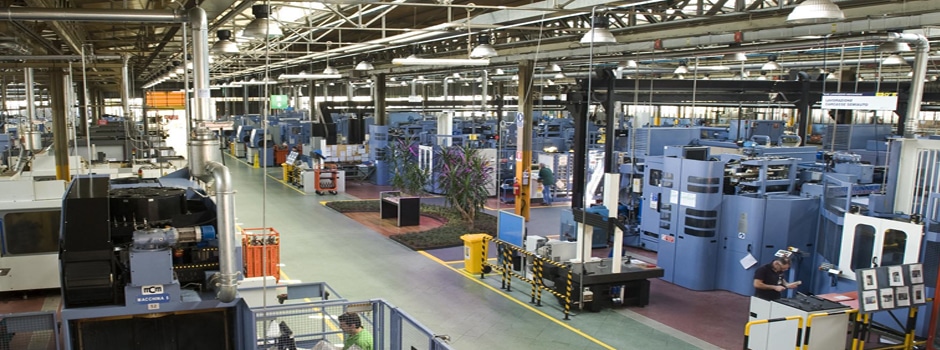

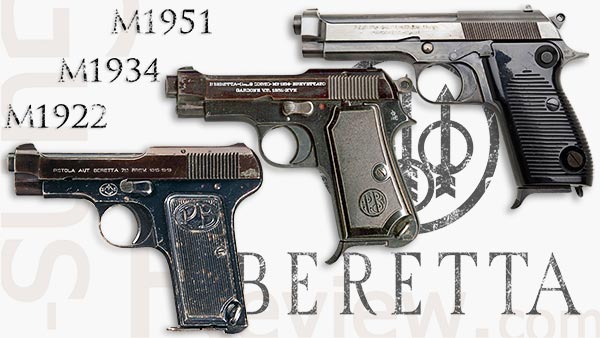

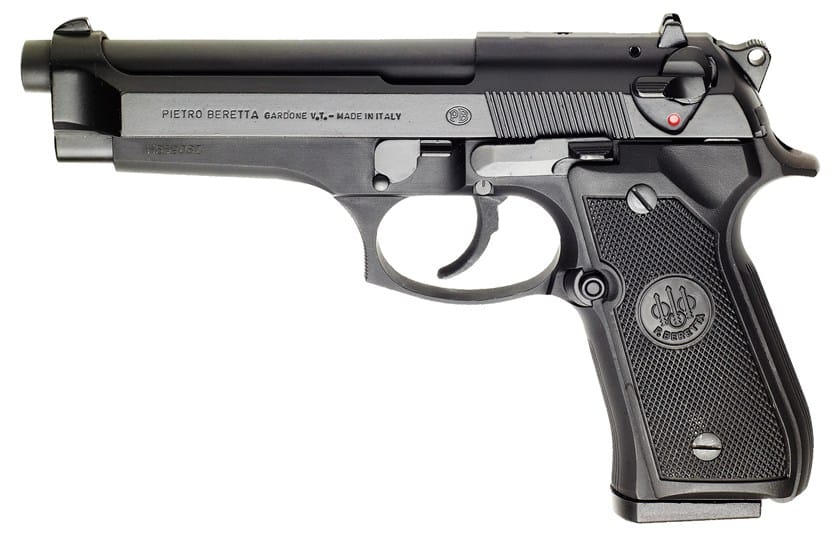

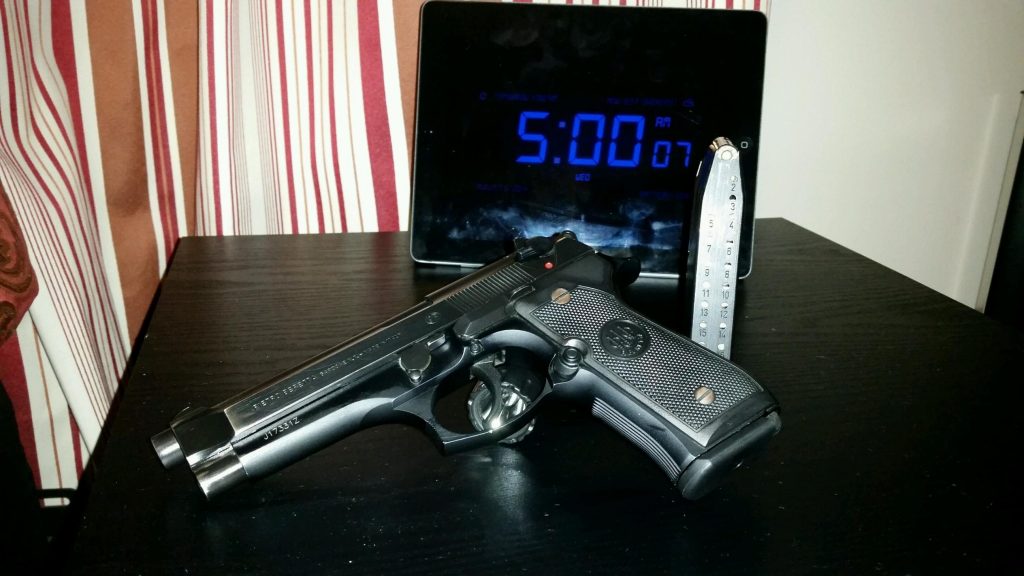

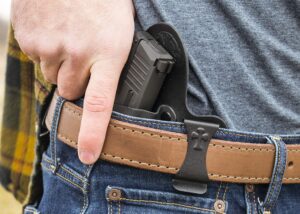
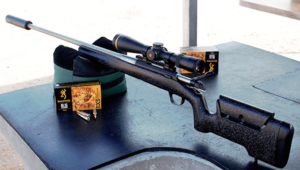
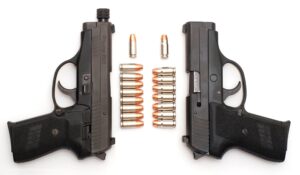
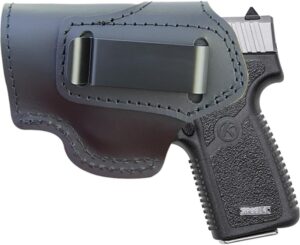



2 Responses
The reason the slide was fracturing , was that the military were using a different 9mm ammo. Beretta actually sued the military (Gov.) for getting a bad rap because of the wrong ammo…Beretta won the suit. Just some info you might want to add thats pertinent to this particular subject….Peace. I own the FS , Italian made model.
my 92 FS OUT SHOOTS MY GLOCK 19 X AND MY SIG 365. I WOULDNT IT UP FOR NOTHING.